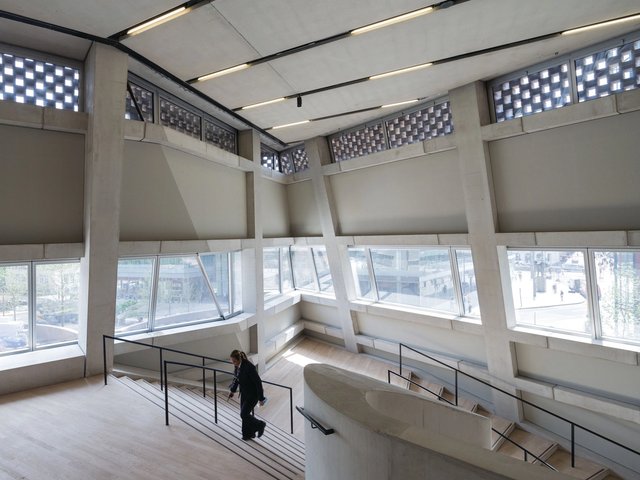Forget the white cube. Tate Modern this month unveils two dark, circular spaces—former oil tanks decommissioned in 1981—as the world’s first permanent museum galleries devoted to performance, installation, video and live art. The tanks, which open with a 15-week programme designed as part of the London 2012 Festival celebrating the Olympic Games, are part of a £215m extension project due to be completed in 2016. The redevelopment will add 21,000 sq. m of new space and increase the museum’s size by 60%.
The tanks are more than 30m wide and 7m high (around one-third of the size of Tate Modern’s Turbine Hall), and have “slightly different characters”, says Catherine Wood, the museum’s curator of contemporary art and performance. “The South Tank has four columns and the East Tank has nine. Both are essentially bare, and there’s no formal seating because every artist wants a different configuration, so it’s lo-fi.”
The tanks will host the type of events previously staged “as and when space was available” elsewhere. “Some people will be a bit scared; if you mention performance art, they think of naked body art in the 1960s. But the tanks give us new momentum. It’s not the usual case of ‘don’t touch; stand behind barriers’. We can experiment and set out our stall for what it will be like when [the redeveloped museum] is all open. We’re setting the agenda.”
The inaugural programme has been organised by Kathy Noble, Tate Modern’s curator of interdisciplinary projects, Stuart Comer, the museum’s curator of film, and Wood.
The centrepiece is a new commission by the South Korean artist Sung Hwan Kim (18 July-28 October), supported by Sotheby’s. “Temper Clay”, one of “three or four” films created by Kim for the East Tank, takes its title from Shakespeare’s “King Lear” and was made in the Korean mountains and in Seoul. “He works on a scale that we thought would fit [in the tanks],” Wood says.
Projects in the South Tank include a reworking of Anne Teresa De Keersmaeker’s 1982 performance Fase: Four Movements to the Music of Steve Reich (18-20 July), which Wood describes as “beautifully polished, high-end work with popular appeal”.
The Japanese artist Ei Arakawa (24-29 July) plans to host a singles’ night featuring specially devised games, perhaps resulting in some “love in the oil tanks”, Wood says. A performance by Eddie Peake (21 July) will incorporate dancers, drums and, potentially, the emerging artist’s naked body. “That hasn’t been confirmed yet,” Wood says. “Our health and safety officer loves us,” she adds.
The South Tank will also host “Undercurrent” (16-27 August), a festival for young people, during which the artist Hetain Patel (17 August) will use films and a live monologue to explore cultural differences. Two recently acquired feminist works—Lis Rhodes’s Light Music, 1975, and Suzanne Lacy’s The Crystal Quilt, 1987—will be installed in the Transformer Galleries next to the tanks (18 July-28 October).
Originally appeared in The Art Newspaper as 'Get tanked at the Tate'


